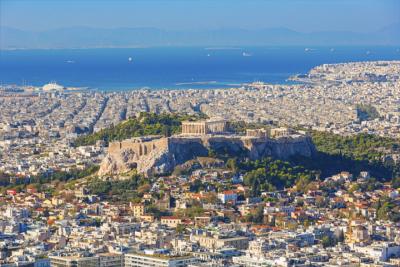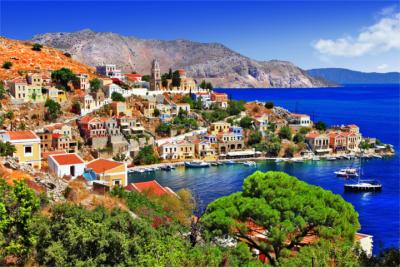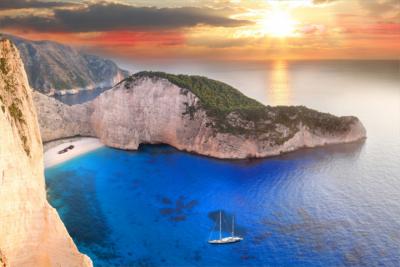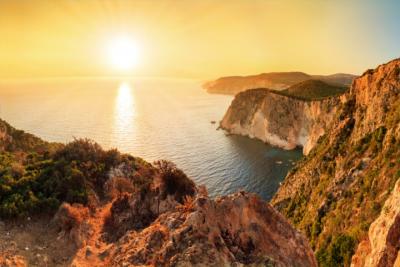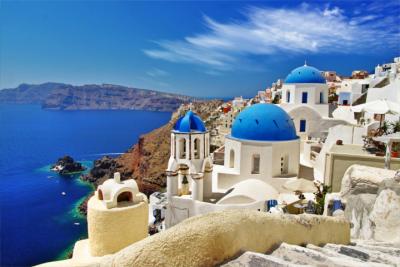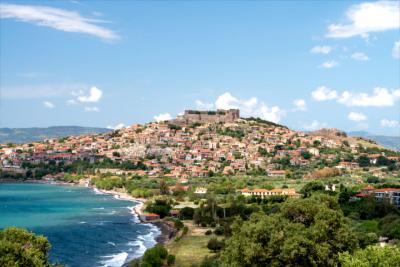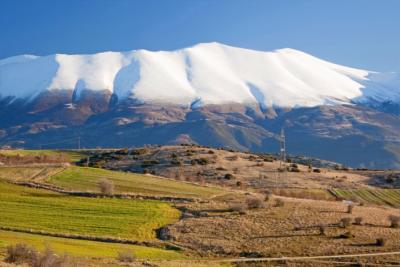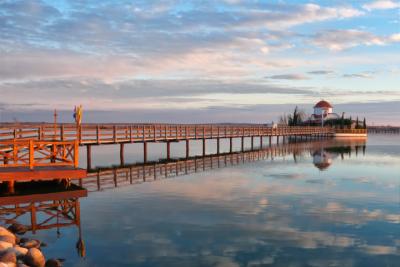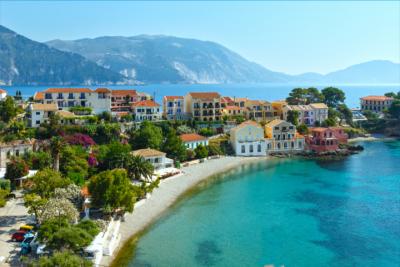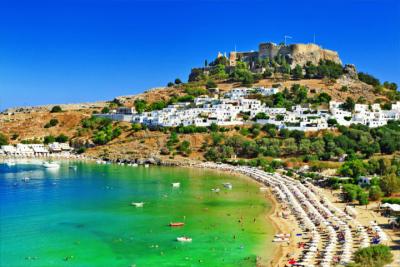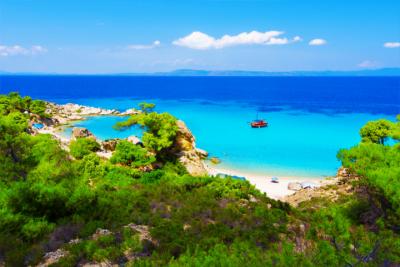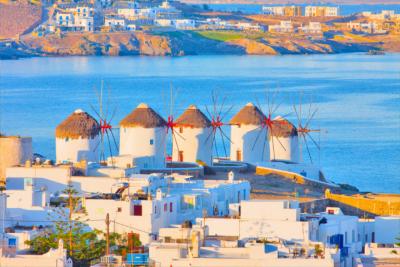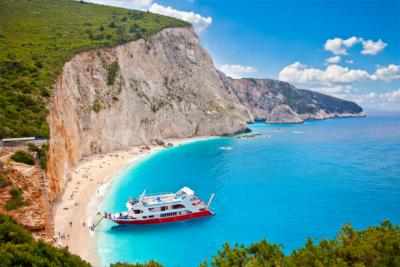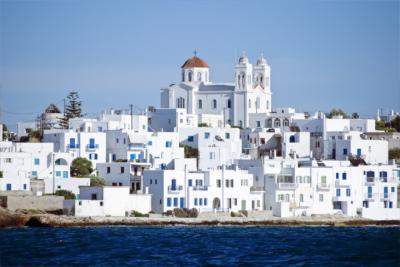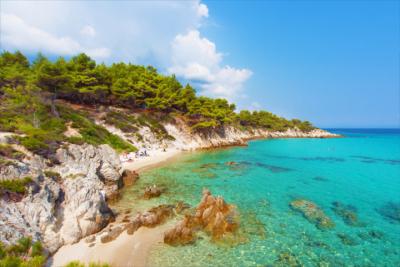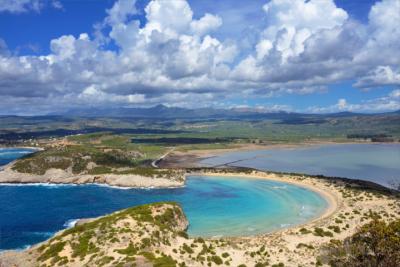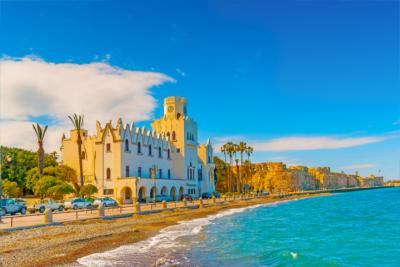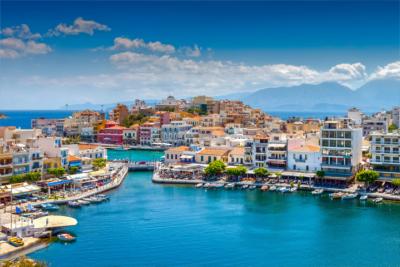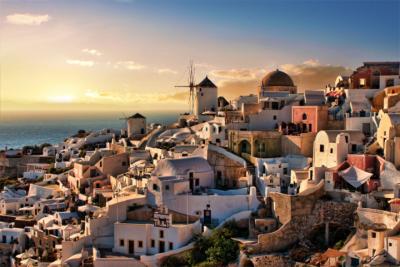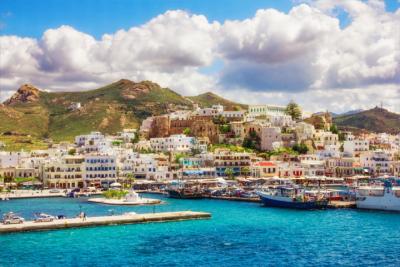Travel Offers
Travelmyne Featureprint
Distance
Peloponnese - Discovering the Real Greece
The Peloponnese is a classic destination for individual travellers. It provides an insight into the real Greece with its traditional destinations, quaint taverns and kafenios. In addition, it is characterised by idyllic bathing beaches, wonderful nature and numerous ancient sites.

Geography - The peninsula, which is actually an island
The Peloponnese is a peninsula in the south of the Greek mainland. It borders on the Ionian Sea in the west and the Aegean Sea in the east. Originally, the Peloponnese was an island, which was separated from the mainland by a number of geological movements and then united with it again. Due to the sinking of the sea level, the Isthmus of Corinth was created - a land bridge which was artificially severed in the 19th century and made the Peloponnese an island again. The region has an area of 21,549 km² and about one million inhabitants. It is divided into the following seven regional units: Argolis, Arcadia, Corinthia, Laconia, Messenia, Elis und Achaea. Regarding administration, the latter two belong to West Greece. The capital is the city of Tripoli but the greatest city is Patras. Other important cities in the region are Nafplio, Pilos, Sparta and Corinth. The climate is Mediterranean along the coast and rather continental in the heartland. In general, the average temperature is about 3 °C higher than on the mainland.

Nature - Impressive diversity of landscape
The Peloponnese has a lot to offer with regard to landscape from long, flat bathing beaches to vast plains and high mountains. You see fine sandy beaches, while the east mostly has pebble beaches. The highest peak is the Taygetos mountain range with a height of 2,407 metres. Furthermore, there are beautiful caves such as Pirgos Dirou, the deep Louisos Gorge near Dimitsana and the magical Voidokilia Beach in Pylos. The Peloponnesian landscape is dominated by barren rocks, which form steep cliffs along the long coast. The flora in the Peleponnese is as diverse as its landscape. In the heart of the peninsula, you mainly find hilly landscapes with fir and stone pine forests. The north, east and west are characterised by vast green plains with cypresses, olive trees and vineyards as well as orange and lemon plantations. In addition, the Peloponnese is rich in rivers. The most significant ones are Ladon, Peneus, Neda, Asopos, Evrotas and Pamisos.

Culture - An exciting journey from ancient to the modern times
The name "Peloponnese" ("Island of Pelops") is derived from the mythological hero of Pelops and the word "nesos", which means "island" in Greek. This region is an ancient cultivated land, which provided travellers with a fantastic insight into Greece's chequered history. It accommodates unique archaeological cultural sites from different eras from ancient to modern times. Besides the Mycenaeans, ancient Greeks, Romans, Byzantines and Ottomans, the Venetians, Franks, French and English have left their mark on the peninsula. Wherever you look, you see relics from bygone times. The most important historical sites are without doubt Corinth and Sparta. Significant sights are the Temple of Apollo at Bassae, the Temple of Zeus and the sporting facilities of Olympia, the Temple of Zeus at Nemea, the Ancient Theatre of Epidauros and the Mani Towers. Another special highlight are the various finds from Mycenaen times. Examples are the Mycenaean tombs and the Acropolis of Magoula in Galatas, the Mycenaean citadel of Mycenae, the Palace of Nestor and the Mycenaean palace at Tiryns. In addition, popular destinations are the Rio-Antirrio Bridge and the Gulf of Corinth.

Experience - Greece in all its facets
Greece is full of cultural sights but there is no place which has as many ancient cultural sites as the Peloponnese and no other region looks back on such a long history. A trip to the Peloponnese is a particularly special experience. The smell of the sea and the mountains, the grape harvest, olives and citrus fruit mesmerises every traveller, while the numerous ancient sites take them into the past. Experiencing the Peloponnese means getting to know the real Greece with its traditional towns and villages as well as idyllic bathing resorts. The people are full of vitality, extremely hospitable, have a great sense of honour and are very proud, especially of their culinary specialities. As it is common in Greece, most dishes are prepared with a lot of olive oil and garlic and have a high meat or fish content. Lamb, beef, chicken and pork are served in all kinds of variations. In the coastal regions, fish is more commonly eaten than meat.
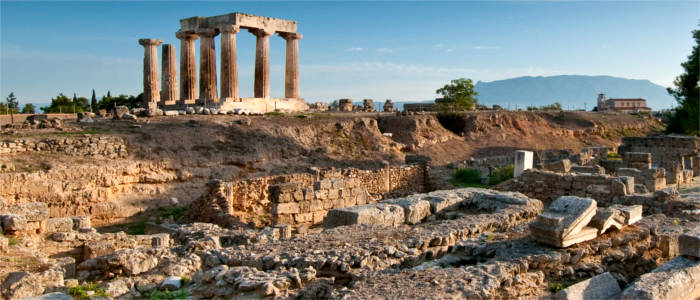
Activities - Active holidays in summer and winter
Despite the Mediterranean and continental climate in the Peloponnese, there are around twenty skiing areas on the peninsula. This is due to the mountains, which are up to 2,400 metres high. The length of the pistes, however, does not compare to those in alpine regions. Most of the pistes are opened from the end of December to the middle of March. The Peloponnese are well-suited for active holidaymakers. Visitors can go on exciting hikes and cycling tours, dive in the sea, go golfing, riding and skiing in winter. Travellers who want to move less at high temperatures can spend their time at the beautiful beaches, for example in Tolon, and engage in activities such as beach volleyball or playing Frisbee.

Information
Travellers can reach the Peloponnese in a number of ways. They can either take the plane to Patras (GPA) or Kalamata (KLX) or fly to Athens (ATH) and continue their journey in a travel coach or a rental car. The peninsula can be reached from the mainland in two ways: via the Isthmus of Corinth or the Rio-Andirrio Bridge, which was opened in 2004. Ships which go to Greece from the major harbours in Italy take you directly to the harbour in Patras. Due to the favourable temperatures, the best time for holidays in the Peloponnese is at Easter or in winter.
The Peloponnese is the ideal travel destination for all culture enthusiasts who want to experience history at first hand. Besides numerous ancient sites, the region offers a diverse landscape and a wide range of sporting and leisure activities.

